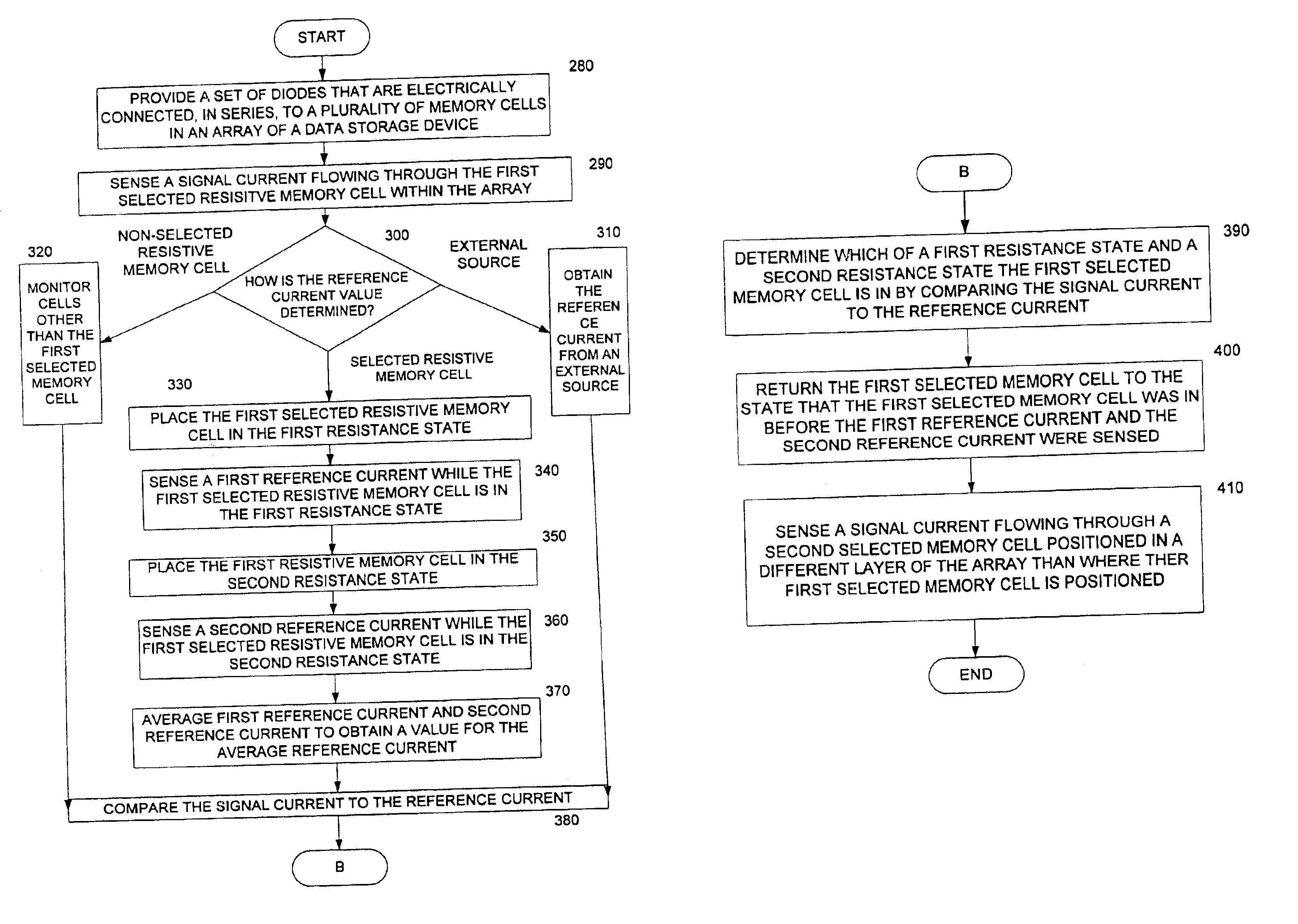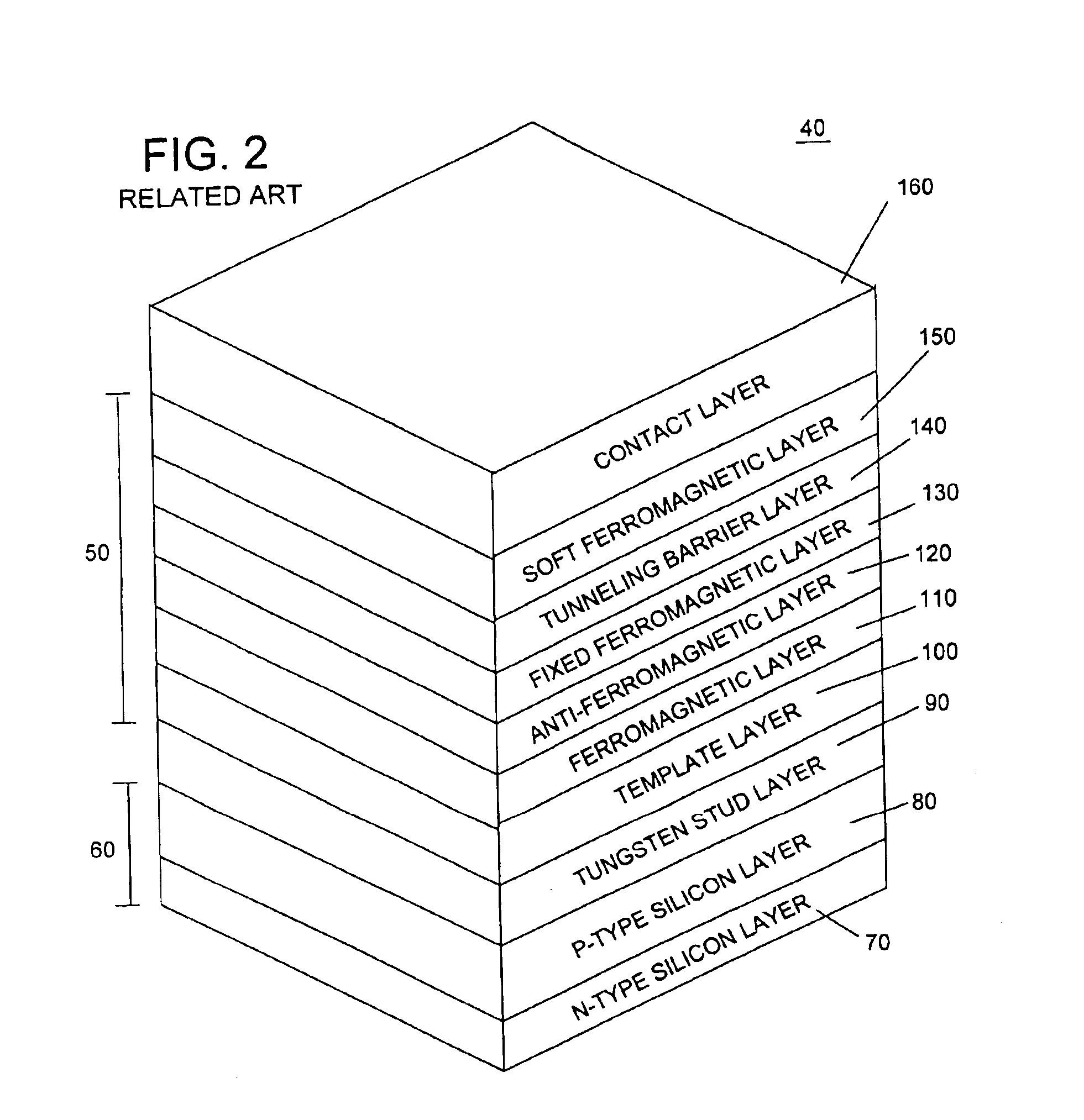Triple sample sensing for magnetic random access memory (MRAM) with series diodes
a random access memory and series diode technology, applied in the field of nonvolatile magnetic random access memory (mram) cells, can solve the problems that diodes , mram memory cells b>40/b> may not have tight resistance values distribution
- Summary
- Abstract
- Description
- Claims
- Application Information
AI Technical Summary
Benefits of technology
Problems solved by technology
Method used
Image
Examples
Embodiment Construction
FIG. 3 illustrates an array 165 of resistive memory cells 170. The array 165 includes one selected word line 180, one selected bit line 190, and one selected resistive memory cell 175, located at the intersection of the selected word line 180 and the selected bit line 190. The array 165 also includes numerous unselected word lines 200, numerous unselected bit lines 210, and a plurality of unselected resistive memory cells 170, positioned at the intersections of word lines 180, 200, and bit lines 190, 210.
FIG. 3 also illustrates a circuit that is electrically connected to the array 165. The circuit illustrated includes a voltage source 220 that is electrically connected to the selected word line 180. The circuit illustrated also includes a sense amplifier 230 that is electrically connected to the selected bit line 190 and a triple sample (TS) counter 240 that is electronically connected to the sense amplifier 230. The triple sample counter 240 can emit an output signal 250.
FIG. 4 ill...
PUM
 Login to View More
Login to View More Abstract
Description
Claims
Application Information
 Login to View More
Login to View More - R&D
- Intellectual Property
- Life Sciences
- Materials
- Tech Scout
- Unparalleled Data Quality
- Higher Quality Content
- 60% Fewer Hallucinations
Browse by: Latest US Patents, China's latest patents, Technical Efficacy Thesaurus, Application Domain, Technology Topic, Popular Technical Reports.
© 2025 PatSnap. All rights reserved.Legal|Privacy policy|Modern Slavery Act Transparency Statement|Sitemap|About US| Contact US: help@patsnap.com



